What makes us distinct as humans? Perhaps even the idea of questioning is unique to humans. Paleoanthropologists have been trying to reconstruct our evolutionary tree from the fossil record for many years. Evolution involves all those changes over time that bring about diversity and are influenced by factors such as natural selection, mutation, genetic drift, and gene flow.
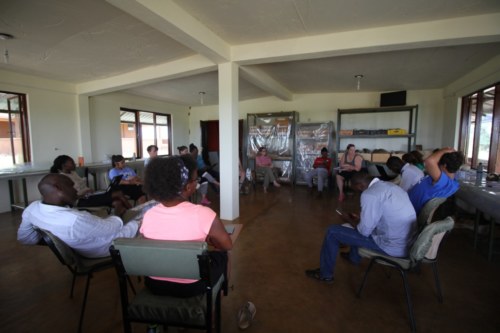
Morning discussion session. Photo credit: Acacia Leakey.
The fossil and archaeological records display a diverse array of hominin adaptations and morphological differences. We are able to trace these changes by comparing skulls, dentition, limb proportions, and even the pelvis. The fossil record shows us that some hominins existed at the same time. For example, Homo habilis co-existed with Paranthropus boisei, the robust australopith termed “nutcracker man” because of its large teeth and pronounced sagittal crest for attachment of the powerful chewing muscles.
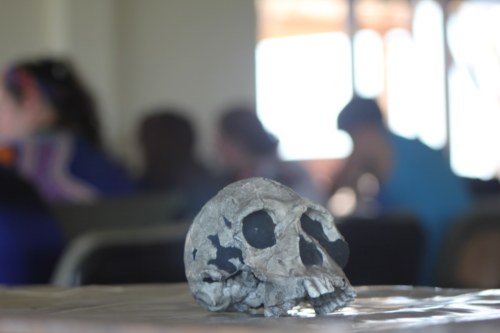
A cast of Homo habilis. Photo credit: Acacia Leakey.
As we approach the end of the module, students have been busy working on their projects. Much of their time has been spent in labs, identifying and distinguishing morphological features of hominin skulls. Projects involved creating a human evolution syllabus that could be used to teach high school students with no background in the subject.
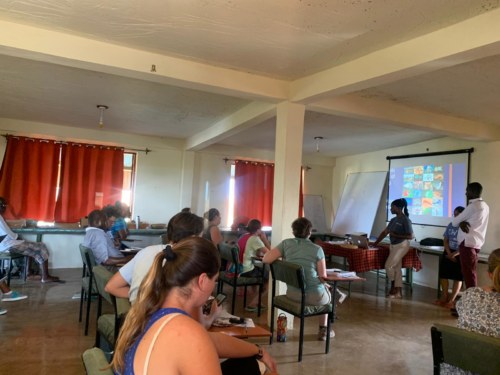
Students presenting their projects. Photo credit: Medina Lubisia.
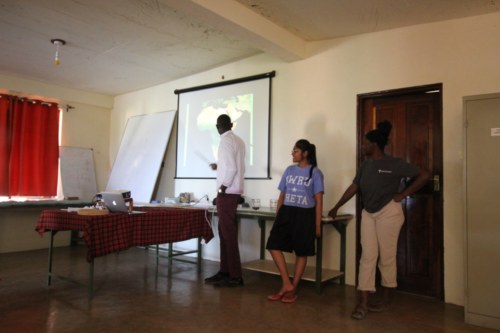
Emmanuel giving a presentation. Photo credit: Acacia Leakey.
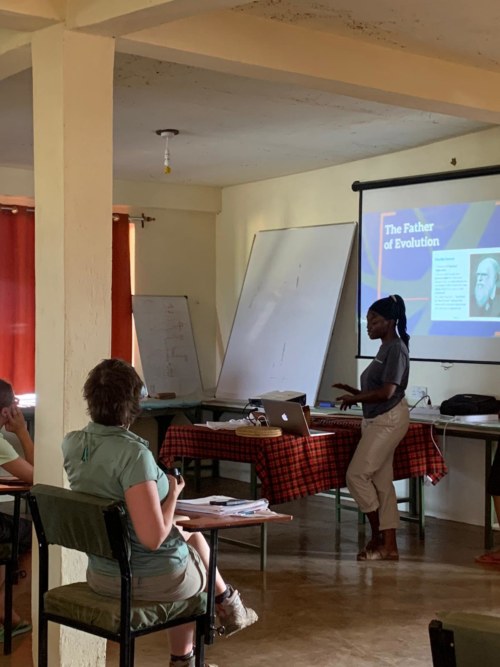
Hillary presenting their syllabus. Photo credit: Medina Lubisia.
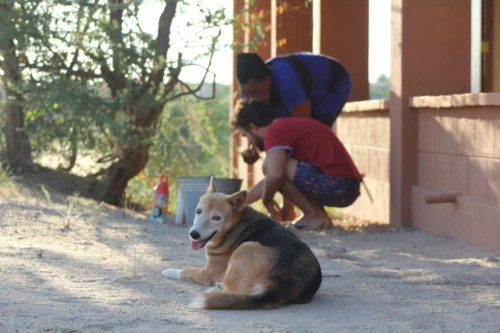
Tom paused for a photo as Pauline and Tym collected sand and pebbles for their project. Photo credit: Acacia Leakey.
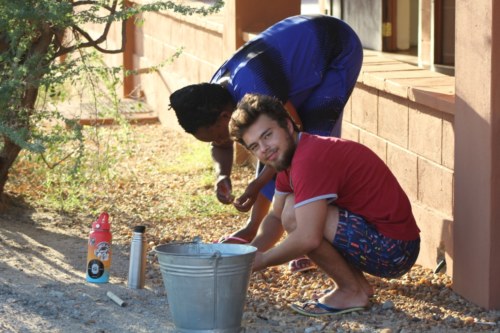
Tym loves the camera! Photo credit: Acacia Leakey.
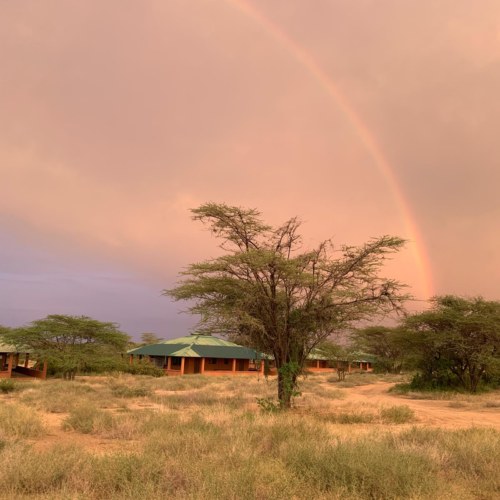
Our beautiful campus arched by a rainbow! Photo credit: Hillary Babalola.
Onto the next module, Archaeology!





